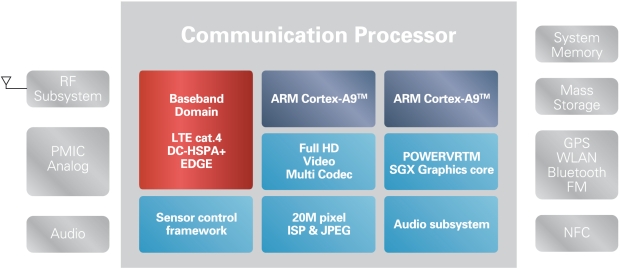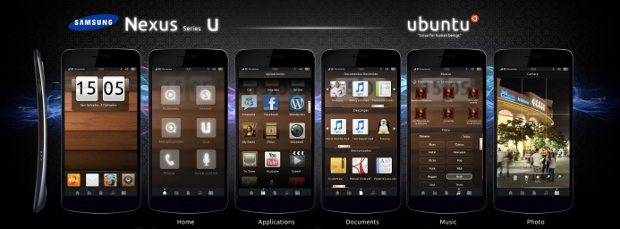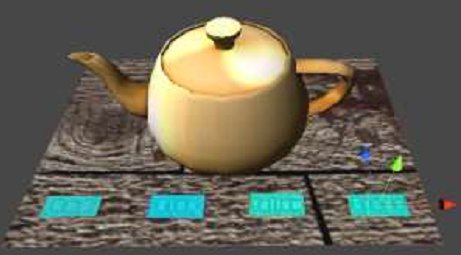Renesas has announced the availability of the MP5232, a dual core Cortex A9 @ 1.5 Ghz single-chip optimized to address the 150-300 USD LTE smartphones market. The MP5232 platform is designed to enable OEMs to accelerate the creation and delivery of high volume LTE/HSPA+ capable smartphones, tablets and mobile Internet devices the industry requires to deliver the full potential of LTE, says the company. Jean-Marie Rolland, CTO and Executive Vice President of Sales and Marketing for Renesas Mobile Corporation explains: “We are seeing a number of US$600+ LTE super phone devices being launched in the market, but the industry needs a wider penetration of LTE devices for the business case for LTE to pay off.” The platform supports multi-camera (up to 20MPixel) and multi-display support, full HD 1080p multi-format video encoding/decoding, stereoscopic 3D (S3D) video and advanced graphics via a PowerVR SGX GPU to deliver a console-like gaming experiences and […]
MediaTek Announces MT6575 Android Platform
Yesterday, MediaTek Inc. announced the availability of the MT6575, its 3rd generation platform for mid and entry‐level Android smartphones (defined as less than 190 USD wholesale). The MT6575 platform offers a 1GHz ARM Cortex‐A9 processor, a 3G/HSPA modem and runs Android 4.0 (ICS). The company targets 2 market segments with this SoC: mid‐range smartphones – The platform supports 720p HD video playback and recording with an 8MP camera and qHD (960×540) display thanks to a Imagination Technologies PowerVRTM SGX Series5 GPU . Mediatek claims the MT6575 offers over 35% improvement for browser applications and over 20% improvement in graphics capabilities for gaming when compared to competitors’ best offerings in these segments. entry‐level smartphones – The MT6575 also caters to low end smartphone with smaller display sizes, lower resolution, less memory and reduced multimedia requirements. The company claims that the MT6575 has the world’s lowest power consumption, as well as support for […]
Using Your Android Smartphone As A Desktop Computer
I’ve already written some posts with videos showing the many things you could do with your smartphone thanks to MHL Technology. Christian Qantrell (YouTube User) uploaded a video on YouTube where he connected his smartphone to a monitor with a MHL cable showing how it could be used as a desktop computer. I really like his setup with a Samsung Galaxy Nexus (Android 4.0) smartphone connected to a monitor with an MHL adapter (Micro-USB to HDMI) and Apple Bluetooth keyboard and (Magic) trackpad. He also mentioned external power, but this should not be needed if his monitor supported MHL. The Apple trackpad makes it very neat as it tracks the finger movements as it would if you used the smartphone touchscreen. He showed web browsing and music playback and said gmail works great. Thanks to the multi-touch trackpad, pinch and zoom also works. Overall, the user experience feels pretty good. […]
Samsung Merges Bada OS With Tizen
Samsung has announced that it was merging Bada operating system with the new Tizen project (Linux OS with HTML5 API) at CES 2012. The work has already started, but Samsung did not provide any estimated completion date. If you have been developing Bada applications, the good news is that Tizen will support mobile applications written with bada’s SDK (software development kit) and previously published bada apps will be backwards compatible. Bada and Tizen developers will be given the same software tools (SDKs and APIs) so that if you know how to program in Bada, you will also be able to make Tizen apps. Samsung expects Tizen will be used in entry-level smartphone powered by single core processors as well as other devices targeted by Tizen such as tablets, smart TVs, netbooks and In-vehicle infotainment (IVI) devices. One or two Tizen devices should be released in 2012, and the company said […]
Vuforia: Qualcomm Augmented Reality Platform
Qualcomm named its Augmented Reality Platform “VuForia” at CES 2012. I was a bit confused reading the press release and thought it was a new product. Actually, it is the augmented reality platform whose Beta SDK has been released in December 2011. Qualcomm explains that “Vuforia’s computer vision functionality will recognize a variety of 2D and 3D visual targets. With support for iOS, Android, and Unity 3D, Vuforia will allow you to write a single native app that can reach over 400 models of smartphones and tablets.” To showcase the AR platform, Qualcomm and Sesame Workshop, the producer behind Sesame Street, have joined forces to explore augmented reality experiences for children and created a prototype playset that brings physical toys to life. Jean-Luc Aufranc (CNXSoft)Jean-Luc started CNX Software in 2010 as a part-time endeavor, before quitting his job as a software engineering manager, and starting to write daily news, and […]
Ubuntu Smartphone and Television UI Mockups
Ubuntu developers announced they wanted to port their OS beyond desktop by 2014, and would like to use it on smartphones, tablets and televisions. Following the announcement, the community has made a few mockup. Here are a few samples: Unity Mobil Mockup by JMMING: I quite like this design (Samsung Nexus Series U) similar to Android with the Ubuntu theme. My Ubuntu Phone by Musl1m: muls1m mockup is also based an icon grid, but keeps the Ubuntu icon bar on the left. Ubuntu with mobile Unity by ginjaninja405 This mockup is similar to the one above, but the icon bar can be located either to the left or to the right, and the bottom image shows phone related notifications such as missed phone calls, SMS and Facebook messages and notifications. There are also other interesting Ubuntu smartphones mockup, including a full phone design (casing + UI) based on Ubuntu theme. If […]
Metaio Releases Mobile Augmented Reality SDK
Yesterday Qualcomm released QCAR SDK 1.5 Beta, and today Metaio announces its Mobile SDK 3.0 for augmented reality application development on Android and iOS. The metaio Mobile SDK brings with it patented gravity-awareness and visual tracking technology for 2D and 3D objects, now three times more robust than the previous version. These features combined will ensure AR experiences that are more natural, more intuitive, and more realistic, says the company. Metaio recently announced formal collaborations with ARM, ST-Ericsson and Texas Instruments to fully take advantage of the GPU hardware provided by those companies and the Mobile SDK is optimized for ARM Mali GPU (both graphics and compute), ST Ericsson Nova and NovaThor mobile processors and TI OMAP processors. The metaio Mobile SDK also includes its own 3D rendering engine – now with advanced shader support – and a plugin to make use of Unity3D (3D game engine). You can watch […]
Qualcomm Releases Augmented Reality SDK 1.5 Beta for Android
Qualcomm has just announced the availability of QCAR SDK version 1.5 Beta 1 for Android. is now available for download. The Key features and improvements in this version of the QCAR SDK include: Video background texture access: The SDK now provides a simple and streamlined way of accessing the video background texture. Developers can now write custom special effects using powerful shaders resulting in far more exciting application experiences. Swapping datasets at runtime: If your app needs to augment more than 60 images, you can now create multiple datasets – using the web-based Target Management System (My Trackables tool)- and load the appropriate dataset at runtime. You no longer have to upgrade your app to change the target dataset, and you can now build AR experiences that work on a large number of images. Improved tracking performance: The new SDK features several enhancements that reduce jitter in the augmentations, speed […]






